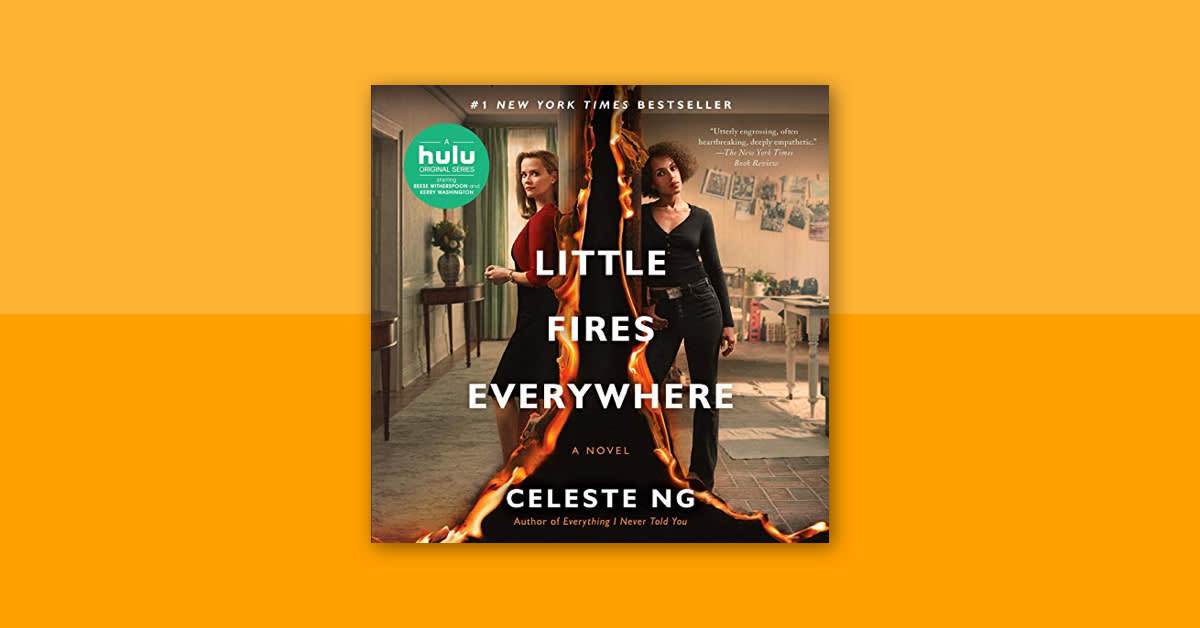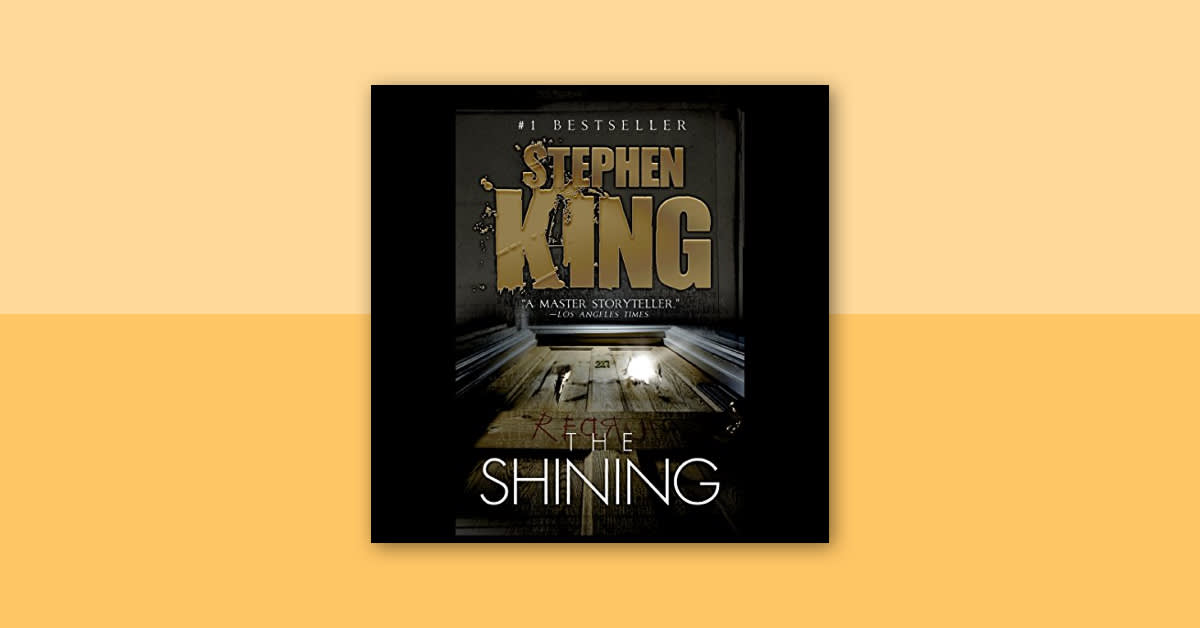Like many great books, Little Fires Everywhere by Celeste Ng has benefited from the Reese Witherspoon boost. When the novel released in 2017, it was Reese Witherspoon's September Book Club Pick, and she quickly optioned the book for a miniseries, with Kerry Washington, through her Hello Sunshine production company. The TV adaptation, co-starring Witherspoon and Washington, landed at Hulu, receiving a number of Emmy nominations and an NAACP Image Award.
How does miniseries differ from the novel? And why have both the book and screen incarnations struck a chord (or touched a nerve) with so many people? Read on for our answers. Warning: this article contains spoilers for Little Fires Everywhere, both the book and the show.
What is Little Fires Everywhere about?
Set in Shaker Heights, Ohio, Little Fires Everywhere follows a tight-knit community of families in the 1990s. Elena Richardson is the do-gooder who always plays by the rules, and she likes to keep things nice and tidy. So, when Mia, an enigmatic and free-spirited artist, moves to town with her teenage daughter, Pearl, Elena's worldview is shaken. Mia and Pearl rent a house from the Richardsons, and soon Elena's children are taken with the newcomers in a way that makes Elena uncomfortable, despite her best efforts to be a welcoming neighbor. The fragile peace in the community is disturbed when a friend of Elena's attempts to adopt a Chinese American baby, leading to a bitter and highly publicized custody dispute that pits Mia and Elena against one another. Unable to accept this challenge to her perspective, Elena becomes determined to dig up every secret that Mia appears to be hiding, with explosive consequences.
Little Fires Everywhere tackles big themes such as identity and assimilation, generosity and charity, and what it means to be a good mother and a good person. As the setting for her story, author Celeste Ng chose a place she knows well: her real-life hometown, a planned community envisioned as the ideal suburb. She focused on the topic of transracial adoption as a way for her novel to explore notions about motherhood and society.
What are the major differences between Little Fires Everywhere and its television adaptation?
Reese Witherspoon and Kerry Washington began working on an adaptation before the novel was even released, and not long afterwards, Hulu won the series in a fierce bidding war. It was developed into an eight-episode miniseries, which allowed the show to take a deep dive into the book's themes and explore facets that are only touched upon in Ng's original story. Because of this change in format and length, there are some differences between the book and the show.
How Elena and Mia meet: In the book, Mia is presented to Elena as someone who is new to town, looking for a place to rent with her teen daughter. In the show, Elena sees Mia sleeping in her car in an empty parking lot while on her way to work, and she calls the police to report her. Later, when Mia turns up looking for a place to rent, Elena rents to her temporarily out of guilt.
Elena's ex-boyfriend: In the book, Elena's ex-boyfriend is mentioned briefly, and it is assumed he died in Vietnam. In the show, he is alive and well, working for The New York Times, and Elena uses him to dig up dirt on Mia.
Mia's race: In the book, Mia's race is never stated, although author Celeste Ng clarified later that she wrote Mia as a white woman. In the show, Mia and her daughter are Black.
Mia stealing: In the show, Mia has free range of the Richardsons' house, and in one episode, she is shown stealing small items as she walks through it, room by room. This never happens in the book.
Mia's sexuality: In the book, Mia's sexuality is never confirmed, but it is implied that she is asexual. In the series, she is shown to have relationships with people of all genders. She has a meaningful, romantic and sexual relationship with Pauline, her photography professor and a famous photographer.
Mia's photograph: In the book, the portrait of Mia taken by the famous photographer Pauline is displayed in a local art museum and spotted by Elena's children. In this photograph, Mia is holding an infant: her daughter, Pearl. In the miniseries, Mia sells the photograph to The New York Times, and it's a photograph of her pregnant and naked in a bathtub.
Mia helping Bebe: In the book, Bebe is represented by a lawyer who offers to take on her case pro bono after hearing about the controversy on the news. In the show, Bebe has no money for a lawyer, and Mia sells the important and sentimental photograph of herself taken by Pauline in order to pay for a lawyer for Bebe.
Bebe and May Ling: Bebe is desperate to reunite with her daughter, May Ling, whom she abandoned after giving birth. May Ling has since been in the care of wealthy couple, the McCulloughs, who rename her Mirabelle. When Mia figures out that Mirabelle is May Ling, she tells Bebe. In the book, Bebe shows up on the McCulloughs' doorstep unannounced but is quietly turned away. In the show, Bebe's confrontation is much more dramatic: she arrives at Mirabelle/May Ling's birthday party uninvited and begins yelling for her daughter.
Moody and Pearl: In the book, Moody is Elena's youngest son, and he has unrequited feelings for Pearl when she moves into town, which is further complicated by the fact that Pearl begins dating his older brother. In the show, it's implied that Pearl returns Moody's romantic feelings.
Izzy: Izzy is Elena's daughter, and in the book she is an outcast at school for reasons that are never fully explored. But in the show, Izzy is given a backstory of kissing another girl and getting caught by classmates, who tease and ostracize her because of that. Celeste Ng fully supported this change, stating that she wished she'd had more room to explore this facet of Izzy's character in the book.
Elena's offer: On the show, Elena coldly offers Bebe $10,000 to drop her custody case against the McCulloughs, which Bebe refuses. In the book, Elena makes no such offer.
Pearl and Lexie: The relationship between the two girls is an extension of more tension between Mia and Elena. In the book, Pearl offers to write an admissions essay for Lexie. In the show, Lexie blatantly steals Pearl's experiences for her own essay. Later, when Lexie becomes pregnant and decides to have an abortion, she puts down Pearl's name at the clinic because she fears Elena finding out. Pearl agrees, although reluctantly, in the book. In the TV show, Lexie does it without asking Pearl.
Pearl and Trip: Pearl and Trip have a secret relationship in both the book and show, which is sexual. In the show, Trip is unable to perform to his own satisfaction and blames Pearl. But in the book, their relationship is healthier and more affectionate.
Mia and the truth about Pearl's birth: In both the book and the show, audiences learn that Mia conceived Pearl as a surrogate for a wealthy couple desperate to have a child. When her brother died unexpectedly, Mia couldn't bear losing her child. To keep Pearl, she lied and told the couple she miscarried. Mia tells Pearl the truth in the book. In the show, Elena discovers the truth and tells Pearl, hoping to hurt Mia.
Who started the "little fires": In the book, Izzy is responsible for starting fires in everyone's beds, furious to find out that her family had been using Pearl and Mia. She doesn't know that her mother is in the house, and she runs away shortly afterward. In the show, Izzy's siblings Moody, Trip, and Lexie start the fire instead, and Elena takes the blame.
Although some changes are more dramatic than others, the miniseries stays mostly true to the essence of Celeste Ng's book. However, while Little Fires Everywhere is very obviously a standalone novel, its TV adaptation may continue. The show runner has expressed interest in exploring new and original storylines in a second season.







